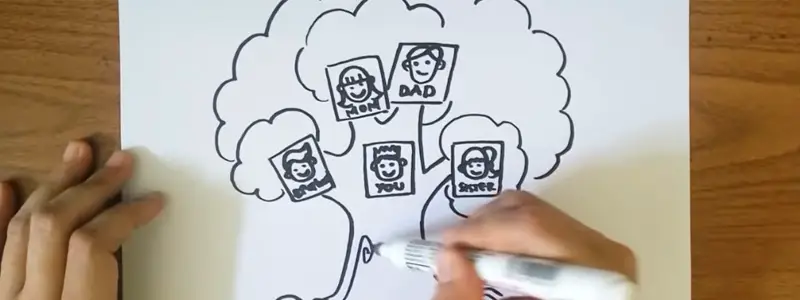Figuring Families Relationships With a Family Circle
Table of Contents
Children might wonder how people they meet at the holidays and special family events are related to them can create a family tree alternative – the family circle.
Kids know how their sisters, brothers, and parents are related to them. However, terms like “cousin” and “aunt and uncle” are often simplified for extended family members. Kids can have a fun time learning terms like “great uncle”, “third cousin”, and “first cousin once removed” while creating a simple family tree. Then kids can try out their knowledge at the next family party.
Creating a Simple Family Tree
In this age of blended families and stepparents, children can list the person they consider to be their mother and father and through whom they know their aunts/uncles and cousins. This isn’t the accurate way of recording relatives. However, this activity allows the children to learn about their relationship with the relatives with whom they come in contact.

Children will need two pieces of paper to create family circles – one for their mother’s family and one for their father’s family. They will do this activity twice, once for each family. In the center of the paper, draw a circle. Record the name of the child’s parent’s grandparents. Draw a ring around that circle and list the children of that couple, spaced out around the circle. Use a line to divide the circle between children. When listing a name, include marriages by writing the husband’s or wife’s name in parenthesis after the letter “m”.
In the next ring, list each of those couple’s children (again listing any marriages). In a fourth ring, list the children from those couples (this is where the child will be listing her name). If necessary, create a fifth ring.
Sorting Out Family Relations
Children can look at the family circle they created to work out how their different relatives are specifically related to them. Steve Caney in Kids’ America (Workman Publishing, 1978) offers these guidelines for sorting out family relations.
- The parents of a child’s father or mother are the child’s grandparents and the child is their grandchild.
- The parents of a child’s grandmother or grandfather are the child’s great-grandparents and the child is their great-grandchild.
- Although the child didn’t list this information on their family circle, the parents of their great-grandmother and great-grandfather are their second great-grandparents (or great-great-grandparents) and the child is their second great-grandchild (or great-great-grandchild).
- The children of a child’s brothers and sisters are the child’s nephews and nieces and the child is their aunt or uncle.
- The child’s parents’ brothers and sisters are the child’s uncles and aunts. The child is their nephew or niece.
- The children of a child’s nieces and nephews are the child’s grandnephews or grandnieces and they are the granduncle or grandaunt.
- The children of a child’s uncle or aunt are the child’s first cousins and they, in turn, are their cousin’s first cousin.
- The children of first cousins are second cousins to one another. The children of second cousins are third cousins to one another.
- “Once removed” implies a different generation. So, the child’s parents’ first cousins and the child’s are first cousins once removed. The children of a child’s second cousins are second cousins once removed.
Although figuring out family relations may seem like a brain teaser, children can sort out what it means when people are called their aunts/uncles, cousins, first cousins, and beyond by creating a simple family circle and observing how the people in families are connected.
